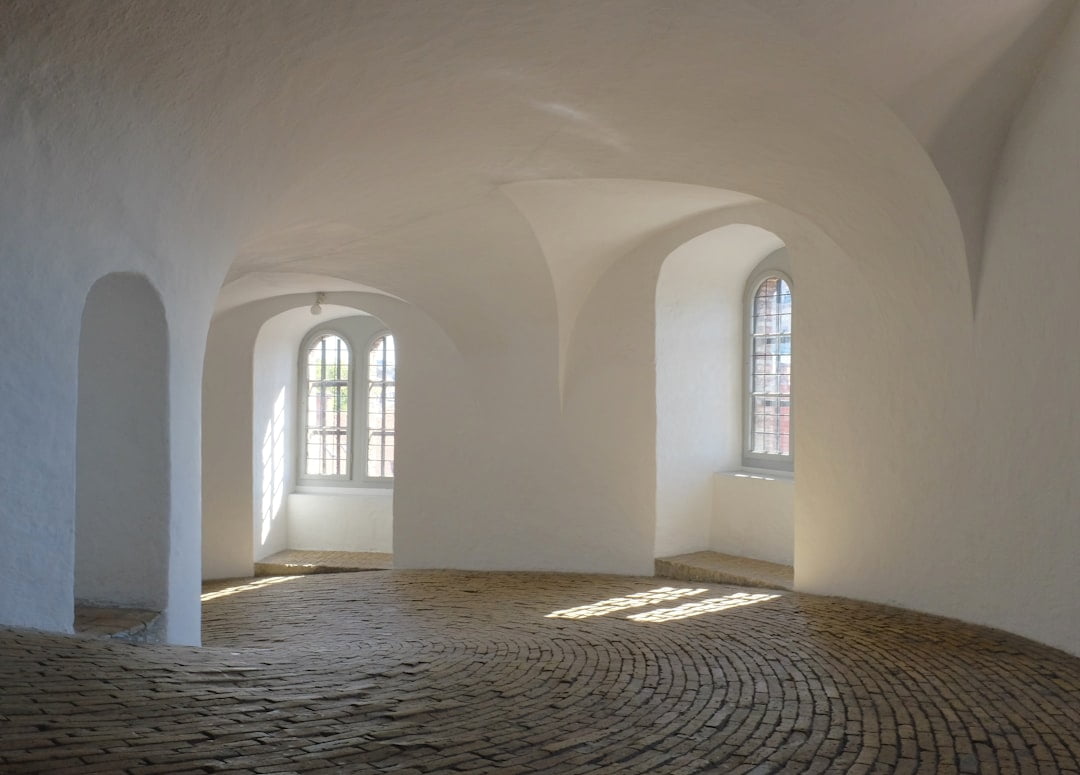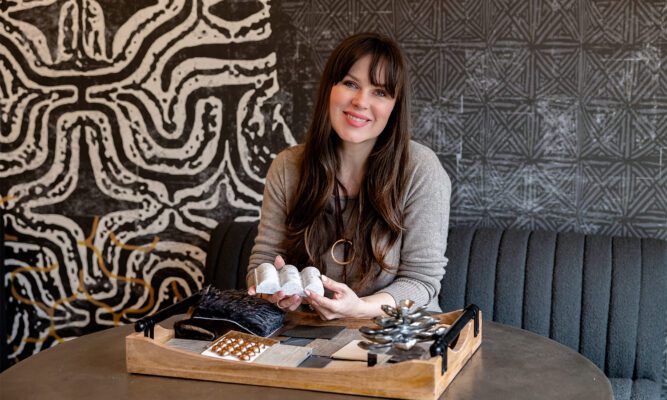The Importance of Collaboration Between Architects and Interior Designers
When architects and interior designers collaborate, the result is a harmonious blend of form and function. A well-coordinated effort between these two professions yields spaces that not only meet but exceed the needs of their occupants, all while ensuring compliance with building codes and regulations.
Enhancing Structural Design and Functionality
In designing interior spaces, collaborating from the start is crucial for a functional and structurally sound building. Interior designers, with their unique perspective, consider factors like furniture placement, traffic flow, and user experience. Working closely with architects ensures the building’s layout and features support the intended use of the space, creating a seamless integration of design and function.
Contrast this harmonious marriage of form and function with its drab counterpart—one that blends aesthetics with bland utilities. While the latter may fulfill basic needs, it lacks the thoughtful planning and vision that make a space truly transformative. Smart architects, working hand in hand with their designer counterparts, strive to create spaces that transcend mere dwelling areas into serene sanctuaries. This collaboration ensures that every detail serves a purpose, fostering a sense of comfort and well-being. In doing so, they elevate the user experience, creating environments that inspire and rejuvenate.
During a renovation, architects and interior designers must share their expertise to address structural concerns and bring new design elements into harmony with the existing building. Collaboration flourishes when open communication and creative problem-solving are at the forefront.
Distinct Roles and Responsibilities of Architects and Interior Designers
Architects and interior designers work closely together, but they play distinct roles in the design and construction process. While architects focus on the building’s framework, interior designers concentrate on the spaces within, and together, the problem-solve create.
Architects’ Focus on Building Structure and Systems
The creative minds behind architectural masterpieces, architects craft the very essence of a building’s layout. From ceiling to foundation, they consider each element, seamlessly integrating mechanical systems to craft a product that exceeds expectations while adhering to the demands of modern building codes.
Interior Designers’ Emphasis on the Interior Environment
The real art of interior design lies in its nuances. A good interior designer must strike the perfect balance between functionality and style, balancing factors like furniture placement, color schemes, and finishes to create a truly unique space that reflects the personality of its occupants.
Effective interior designers don’t just create beautiful spaces—they also consider how people live, work, and interact within those spaces. They consider ergonomics, acoustics, and accessibility to craft spaces that are not only visually stunning but also functional and user-friendly.
When bringing a major project to life, architects and interior designers must work hand in hand to craft a harmonious design. Interior designers pour their expertise into the intricacies of space planning, material selection, and furniture placement, while architects focus on structural elements and building systems. By pooling their talents, they can conjure a seamless space that fulfills the needs of its occupants while staying within budget and deadline constraints.
Overcoming Challenges in the Collaborative Process
Designing a harmonious space requires careful coordination. Unfortunately, architects and interior designers don’t always speak the same language. Whether it’s lingo, perceptions, or varying intensity levels, understanding each other’s mindset is key to successful project synergy.
“Communication is the pulse of any collaborative effort”
Mainstage takes pride in knowing that our experience in interior design principles applies to overcoming design challenges that go beyond following trend. We masterfully combine vision principles with pragmatic needs, creating peaceful, beautiful environments. Developing an uncanny urge to curiously explore means, like discovering secret doors that we have been feeling into an airy passage of wisdom by practicing timeless style amidst a plethora of breathtaking techniques, even in our dreams, is equally rewarding for our work teams.
Benefits of a Collaborative Approach in Design and Construction
No two projects are the same, but a collaborative approach streamlines the design process. The architect and interior designer collaborate, bringing their expertise to craft truly remarkable spaces.
Enhancing Efficiency in Timeline and Budget
Effective communication is the backbone of any successful project. When architects and interior designers collaborate from the beginning, they can identify and overcome obstacles early on, ultimately saving time and money.
Think of it like setting the foundation for a beautiful room: choosing the right flooring requires architect and designer harmony. By considering special subfloor requirements upfront, we can reduce the likelihood of costly reworks and re-expenditures down the line.
When interior designers and architects collaborate, the process becomes more streamlined and cohesive. By working together, they can avoid errors and omissions that can cause delays and additional costs. With a shared vision, they can create a seamless and functional space that meets the client’s needs.
Collaboration in Various Types of Projects
Collaboration between architects and interior designers is crucial for a wide range of project types, from residential homes to large-scale commercial buildings.
Healthcare Facilities
It’s imperative to marry the seemingly opposing forces of creativity and restraint in healthcare facility design. Interior designers and architects need to strike a delicate balance between practicality, comfort, and innovation to create sanctuaries that prioritize people over technologies in the healing process.
This focus is not just on bricks and mortar but also on the fabric of therapy spaces: transforming interior layouts with a fresh mindset to strengthen confidence restoration while adhering to essential guidelines. Moreover, architects and designers work closely together, exploring the nuances of this approach to ensure a cohesive and balanced design. In addition, they collaborate to make sure the spaces align seamlessly with both practical necessities and therapeutic goals. As a result, the transformation becomes not only visually appealing but also purposeful and impactful. Therefore, careful attention to detail is required to achieve the desired outcomes. Ultimately, if the keynotes outlined above have been followed, they have been set out clearly, providing a solid foundation for the entire design process. Consequently, this ensures that every element aligns with the overall vision and goals.
Commercial Buildings
Drawing from their respective areas of expertise, share ideas, architects and interior designers can together produce office environments that balance aesthetics with functionality. When they collaborate effectively, the result is often a modern, efficient space that boosts employee morale and productivity.
In the context of an office building, an interior designer’s mastery of layout can seamlessly integrate functionality and style. At the same time, an architect ensures the building’s mechanical and electrical systems complement the space’s purpose. Through collaboration, they create an environment that tickles both the productivity and creative bones of tenants.
Effective Communication Strategies for Successful Collaboration
Skeptical? Just ask yourself this: What typically trips up collaborative projects? Answer: Cluttered communication channels and misaligned goals. Break down barriers by regularly verbalizing your thoughts, listening actively, and remaining genuine in your interactions to witness your vision unfold into something wondrous.
- Establish clear roles and responsibilities from the outset. Ensure that everyone understands their role in the project and their expectations.
- Schedule regular meetings and progress updates. This can help ensure that everyone is on the same page and that any issues are addressed in a timely manner.
- Communicate design ideas using visual aids. Sketches, 3D models, and other visual aids can help convey complex design concepts and ensure everyone is on the same page.
- Be open to feedback and willing to compromise. Collaboration requires a willingness to listen to others’ ideas and perspectives and to find solutions that work for everyone.
- Celebrate successes and learn from challenges. Recognize the contributions of all team members and take the time to reflect on what worked well and what could be improved for future projects.
A key takeaway is that you should create a collaborative alliance between architects and interior designers by establishing clear roles, scheduling regular meetings, and embracing open communication to avoid potential pitfalls and ensure a cohesive, functional, and aesthetically pleasing design that meets occupants’ needs and regulatory requirements.
FAQs in Relation to Collaboration Between Architects and Interior Designers
How do interior designers collaborate with architects?
.
Can I do architecture and interior design together?
Collaborative efforts between architects and interior designers are not just a trend; they are essential in today’s fast-paced, ever-evolving design world. In fact, by working together and establishing strong communication from the earliest stages, these professionals can create designs that are functional, safe, and sustainable.
Moreover, effective collaboration between interior designers and architects is the backbone of any successful project. By combining their expertise, the architecture and interior design teams can create spaces that are both beautiful and client-centric. As a result, the outcome often surpasses what individual disciplines could achieve alone.
Furthermore, building a world-class interior space is all about teamwork. When interior designers, architects, and clients work harmoniously, they can create inspiring and uplifting spaces. It’s about understanding the needs of each team member and fostering a collaborative environment that brings out the best in everyone.
You might also like
Elevate Your Space with the Essentials of Luxury
Use an Interior Design Portfolio to Find the Perfect Designer
Discover the Best Architect Bellevue Has to Offer
Bellevue Interior Designer: Elevate Your Home
Bellevue Architects: Your Guide to Finding the Perfect Fit
Embrace Luxury Design with Timeless Luxury Furniture
Crafting Your Dream Home with Precision and Style
Bellevue’s Best Home Flooring Styles
Mastering Building Code Compliance in King County








Our Latest Articles
Living Spaces: Trends for Luxury Homes
People often associate living spaces with just the physical structures. However, it’s about so much...
Jul
Boosting Success through Collaboration between Architects and Interior Designers
Boosting Success through Collaboration between Architects and Interior Designers The harmonious union of architecture and...
Jun
Interior Decorators in Seattle: Your Guide to a Stylish Home
Navigating the world of interior design can feel overwhelming, especially in a style-conscious city like...
Jul
Transform Your Space with a Luxury Interior Designer in Bellevue
You might also like Bellevue Interior Designer: Elevate Your Home Design Inspiration from Around the...
Dec
Top High-End Residential Interior Designers for Luxe Homes
The world of interior design is filled with incredibly talented people, but finding the perfect...
Jul
Design Inspiration From Around The World
Let’s explore some design features from around the world. Italy, London, Mexico, Japan and Scandinavia!
Nov
Seattle Interior Design Firm
You might also like Top Living Room Interior Design Trends for Stylish Homes How to...
Dec
Elevate Your Home with an Interior Designer in Washington
You might also like Bellevue Interior Designer: Elevate Your Home Design Inspiration from Around the...
Dec
Interior Design Seattle
You might also like Top Living Room Interior Design Trends for Stylish Homes How to...
Dec
Interior Design Process: A Step-by-Step Exploration
Interior design goes beyond simply arranging furniture and selecting paint colors; in fact, it’s about...
Jul
Lighting Design: Mastering the Art of It
Although we don’t think about it, lighting is a fundamental part of interior design; it...
Jan
Choosing the Right Interior Designing Firms for Your Project
You might also like Bellevue Interior Designer: Elevate Your Home Design Inspiration from Around the...
Dec
Luxury Interior Design Bellevue
You might also like Bellevue Interior Designer: Elevate Your Home Design Inspiration from Around the...
Dec
Transforming Spaces Through Interior Architecture
Transforming Spaces Through Interior Architecture In a world where aesthetics and functionality are paramount, interior...
Aug
Your Trusted Company for Interior Design Solutions
You might also like Bellevue Interior Designer: Elevate Your Home Design Inspiration from Around the...
Dec
How to Create a Perfect Backyard Getaway
A planned and arranged backyard getaway isn't simply about appearance. Check this post to learn...
Jan
Discover the Best Interior Design Services Near Me
You might also like Bellevue Interior Designer: Elevate Your Home Design Inspiration from Around the...
Dec
Interior Decorators in Seattle
You might also like Top Living Room Interior Design Trends for Stylish Homes How to...
Dec
Interior Designers in My Area
You might also like Top Living Room Interior Design Trends for Stylish Homes How to...
Dec
Interior Design Trends for 2023
Interior Design Trends with Bold Colors Bold colors are making a significant impact on interior...
Feb
Top Living Room Interior Design Trends for Stylish Homes
The living room is often the heart of a home, a space where comfort meets...
Jul
Discover the Best Architect Bellevue Has to Offer
Nestled between the bustling city of Seattle and the serene beauty of Lake Washington, Bellevue...
Jul
Finding the Right Luxurious Interior Designers for Your Home
You might also like Bellevue Interior Designer: Elevate Your Home Design Inspiration from Around the...
Dec
Bellevue Architects: Your Guide to Finding the Perfect Fit
Choosing a Bellevue architect is a significant decision. It’s an investment in your vision, your...
Jul
Interior Design Bellevue: Find the Perfect Designer for You
Designing a beautiful and functional living space is a dream for many, but it can...
Jun
Elevate Your Space with the Essentials of a Luxury Interior
Elevate Your Space with the Essentials of Luxury Interior Design When you think of a...
Aug
Why Is Open Concept Layout Still In Style?
Is open concept layout still in style? In short: yes. We explored some of its...
Jan
Expert Interior Decorator Bellevue WA
Expert Interior Decorator Bellevue WA – Personalized Design Solutions Are you needing a design intervention...
Jun
ADU Design Ideas: Expert Tips to Elevate Your Space
So, you’re dreaming of creating a beautiful and functional living space in your backyard? An...
Jul
Choosing the Right Interior Designers for Homes
You might also like Bellevue Interior Designer: Elevate Your Home Design Inspiration from Around the...
Dec
Modern Master Bathroom Guide: Ideas and Design Tips for 2024
iA modern master bathroom should be a haven of peace and relaxation. It’s where you...
Jul
The Lagom Way of Interior Design
Lagom is a Swedish concept that means “just the right amount” or “not too little,...
Mar
Top-Tier Interior Decorating Companies for Your Unique Style
You might also like Bellevue Interior Designer: Elevate Your Home Design Inspiration from Around the...
Dec
Interior Designer Bellevue WA: Elevate Your Home
Finding the right luxury interior designer in Bellevue, WA, is like finding a needle in...
Jul
Interior Designer in My Area
You might also like Top Living Room Interior Design Trends for Stylish Homes How to...
Dec
Home Decorating by Season
The changing seasons are a great time to redesign and refresh your home while keeping...
Feb
Architect Near Me
Searching for an architect near me? At Ariana Designs and Architecture, we offer tailored architectural...
Dec
Interior Designer in Seattle
You might also like Top Living Room Interior Design Trends for Stylish Homes How to...
Dec
Interior Designers in Seattle Washington
You might also like Top Living Room Interior Design Trends for Stylish Homes How to...
Dec
Use an Interior Design Portfolio to Find the Perfect Designer
Discovering the Perfect Match for Your Space through Interior Design Portfolios Creating a space that...
Jul
Pacific Northwest Home Design
The Pacific Northwest is home to many architectural influences from mid-century modern designs inspired by...
Sep
Eastside Architecture: Leaving an Impression
At Ariana Design and Architecture, located in Bellevue, we specialize in providing interior design and...
Feb
What Is Architectural Design
Have you ever walked into a building and felt instantly at ease or inspired? That’s...
Jul
Popular Kitchen Designs
The kitchen is the heart of the home, and choosing the right design can make...
May
Interior Designer Near Me
Looking for an interior designer near me? At Ariana Designs and Architecture, we specialize in...
Dec
Seattle Architecture: Landmarks & Sustainable Trends
Seattle is renowned for its vibrant culture, incredible food scene, and breathtaking landscapes. But beyond...
Jul